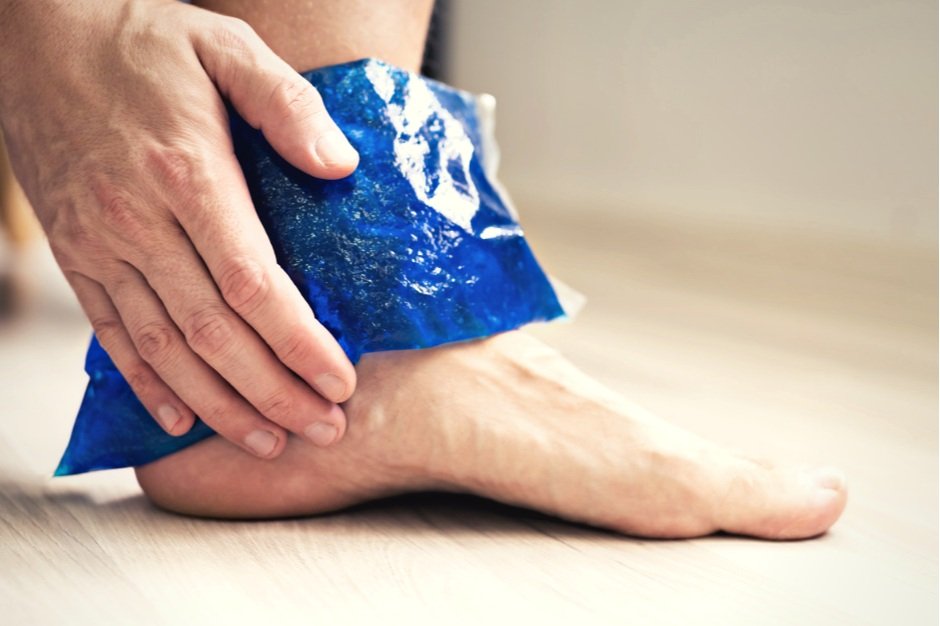Tips for Managing Swelling After Injury
Swelling is a natural part of the inflammatory process after an injury to help protect the injured area and facilitate healing as the body sends white blood cells and supportive fluids to the injured site to repair and heal. However, prolonged swelling can limit your range of motion and negatively affect your muscular strength. It is important to manage and limit swelling with the help of a physical therapist. Check out our 7 tips to manage swelling after injury!
Why Does Swelling Occur?
Swelling, whether from twisting your ankle or overextending your shoulder, is a natural part of the inflammatory process after an injury to help protect the injured area and facilitate healing. After an injury, the body immediately sends white blood cells, proteins, antibodies, supportive fluids, and increased blood flow to the area to help remove cellular debris from the injured site. The extra blood flow and increased fluids needed for repair cause heat, redness, and swelling in the area.
Swelling provides a protective effect to prevent the use of the area and allows for healing. Acute swelling typically develops shortly after injury and lasts several days. However, swelling can limit range of motion and strength in the injured area and lead to tenderness to touch in the short term.
While swelling is beneficial initially for healing, prolonged inflammation and chronic swelling can be detrimental, slowing healing and decreasing your ability to activate your muscles and move your joints fully through their range of motion. It’s therefore important to manage and limit swelling to help you return to activity more quickly.
Tips to Manage Swelling
It’s important to manage and limit swelling to restore movement and strength more quickly to the injured area. The most common recommendation for swelling is the R.I.C.E protocol within the first 24-48 hours after injury. As physical therapists, we also recommend active rest and gentle exercise to enhance your recovery.
Here are 7 tips to manage swelling after injury:
Active Rest: When you initially are injured, continued use of that area can contribute to increased swelling by encouraging more blood flow and irritating damaged cells, e.g. walking on an ankle sprain. During those first 24-48 hours, rest the injured area as best you can, while engaging in gentle movements to maintain range of motion without placing too much weight on the joint.
Ice: Placing an ice pack on the injured area can reduce swelling by causing vasoconstriction, or narrowing of the blood vessels, which reduces fluid delivery to the injured site and thereby reduces swelling. It is recommended to ice several times a day for 15 to 30 minutes.
Compression: Using an ace bandage or a compressive sleeve, you can apply pressure to the injured area, which gently restricts the flow of blood and other fluids into the area to reduce swelling. It is best to have a physical therapist apply compression bandaging as a physical therapist knows how much pressure should be applied and can “grade” the pressure appropriately, such that the bandage is tighter at the end and looser towards the heart.
Elevation: Elevating the injured area above the heart helps use gravity to reduce blood flow and swelling in an injured area. Otherwise, with lower extremity injuries, the excess fluid can collect and pool around the injury, and the risk of a blood clot increases if you don’t elevate a leg injury.
Gentle Exercise, or “Muscle Pump”: Muscles act as a biological pump to push fluid out of the affected area. Gentle exercise helps to get the heart pumping and blood flowing to and from the injury site. A physical therapist can teach you gentle stretches and exercises to decrease swelling safely. The lymphatic system also depends on movement to move lymphatic fluid through the lymphatic system to remove excess fluid and cellular waste.
Manual Lymphatic Drainage: Manual lymphatic drainage should be performed by a qualified physical therapist. The lymphatic system is a network of tissues and organs that help rid the body of toxins and waste, transporting lymph (fluid containing infection-fighting white blood cells) throughout the body through lymphatic vessels and lymph nodes. Lymph nodes work as filters to fight infection and regulate swelling. Manual lymphatic drainage involves specialized massage to remove excess fluid from the injured, swelling area.
Hydration: Staying hydrated makes fluids in the body less viscous and easier to transport. When dealing with swelling, maintaining good hydration can help the body transport fluids in and away from the injured area.
You should wait to return to activity and sports until the swelling is gone and you can perform all activities and sports skills, like running, jumping, kicking, and throwing, without increasing pain or swelling.
Are you experiencing swelling post-injury? Work with a physical therapist to safely manage your swelling and return to your activities more quickly!
